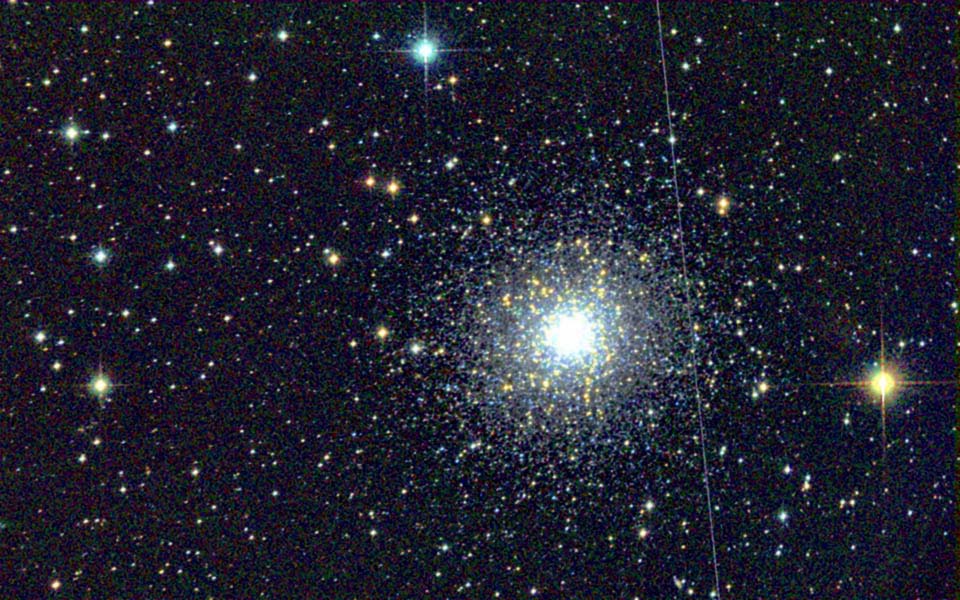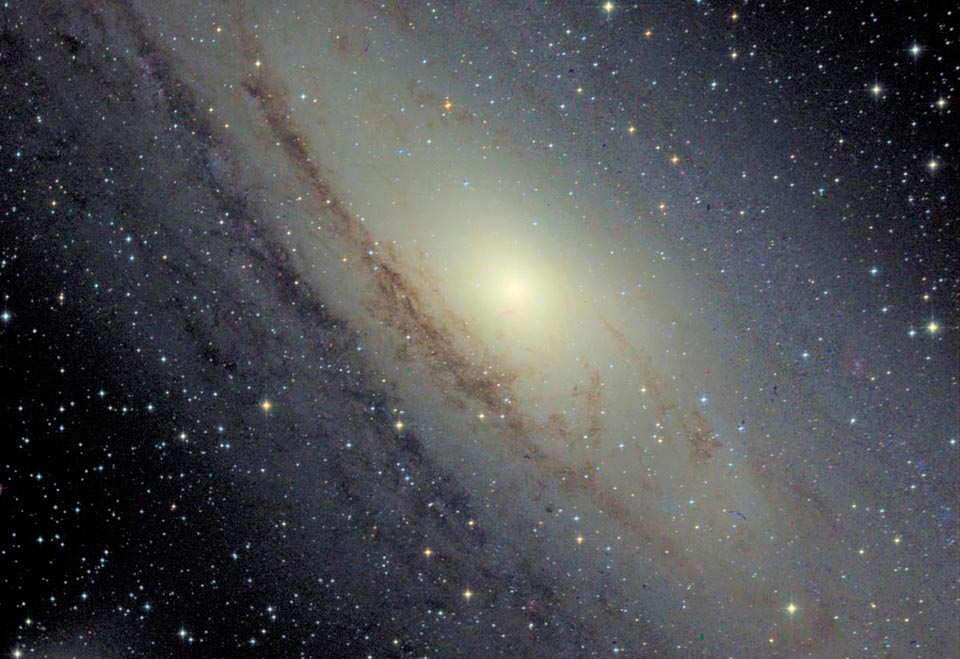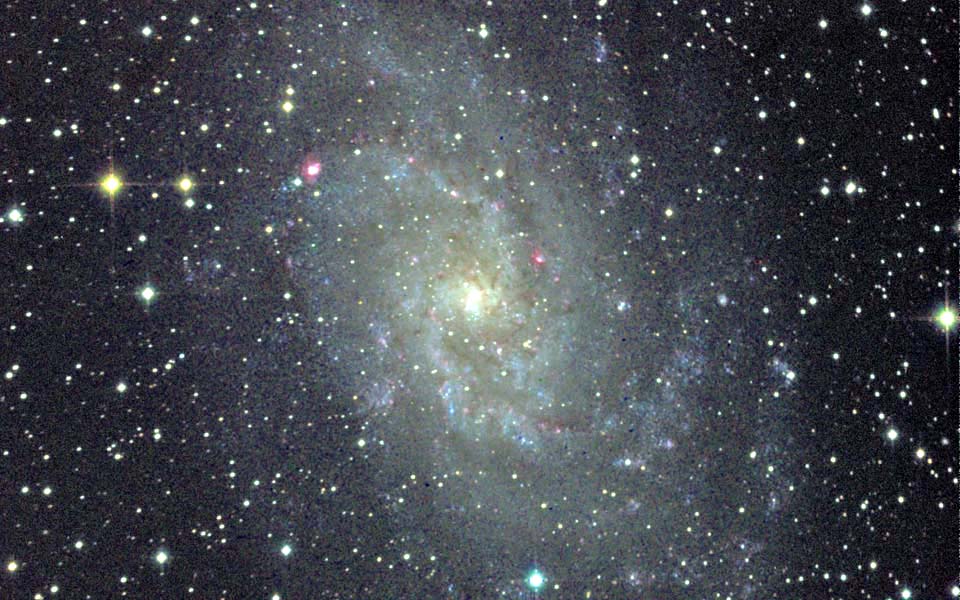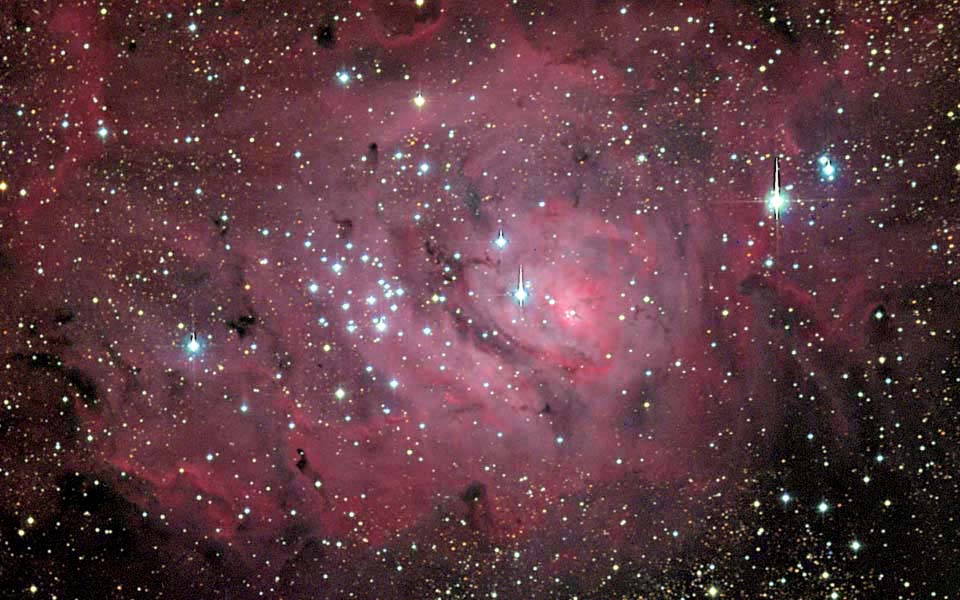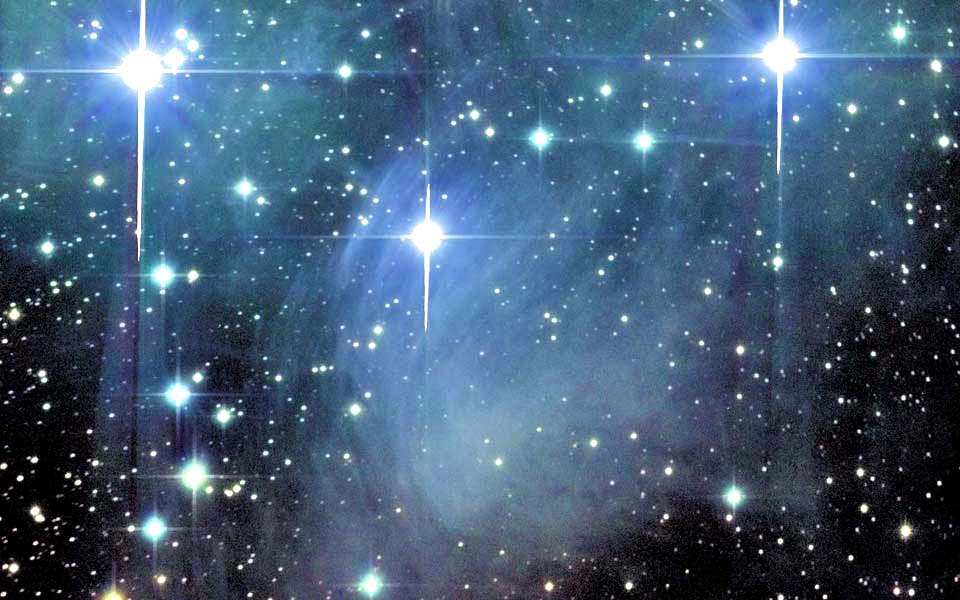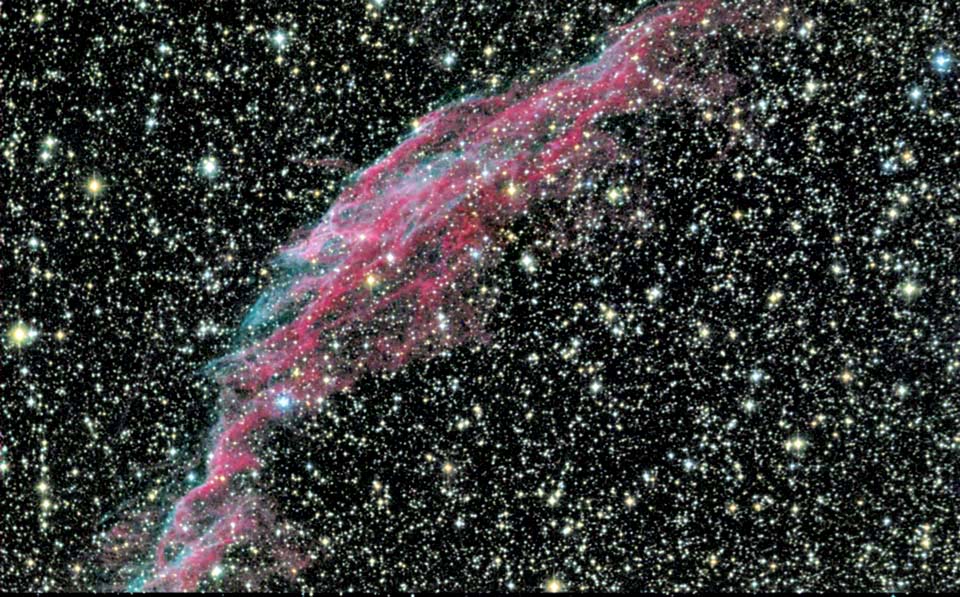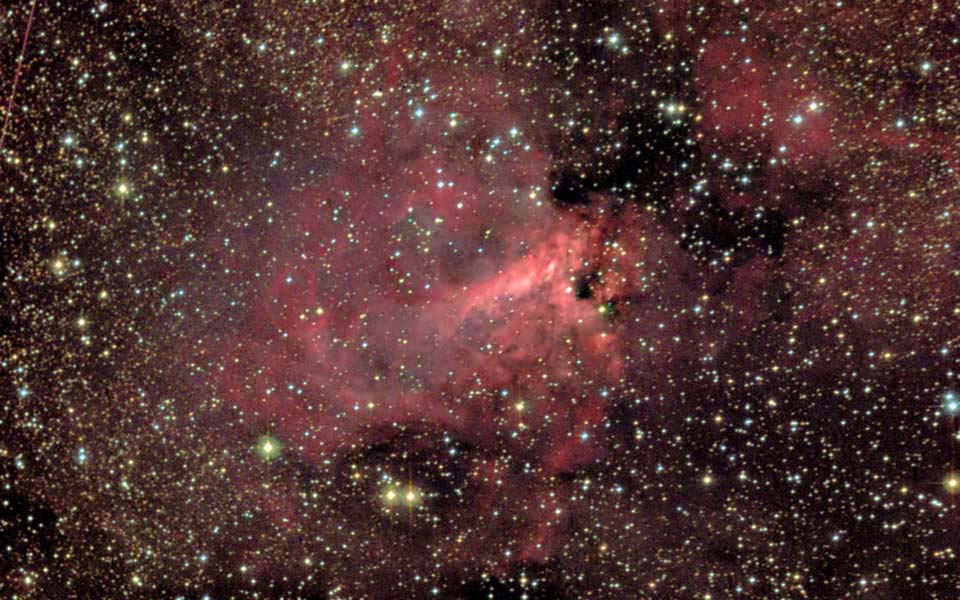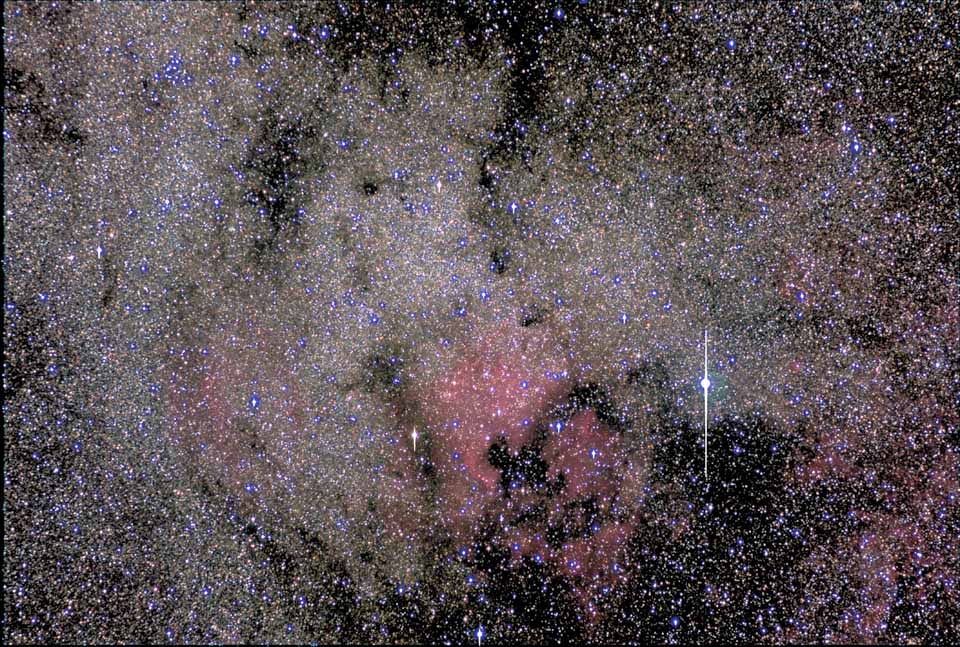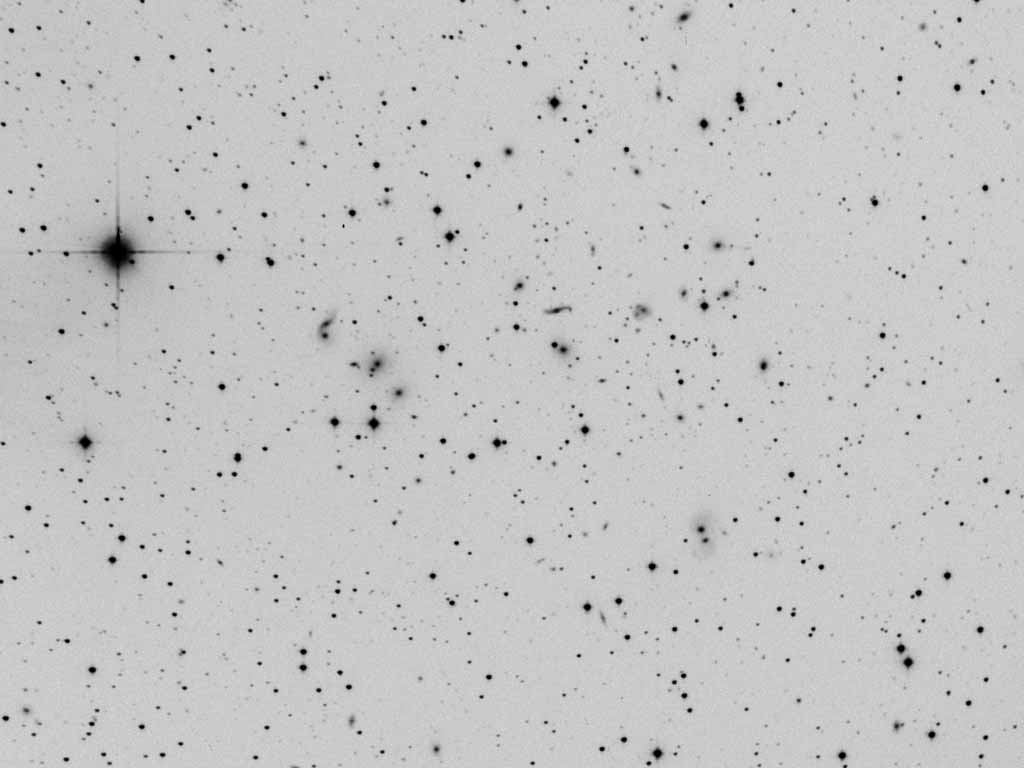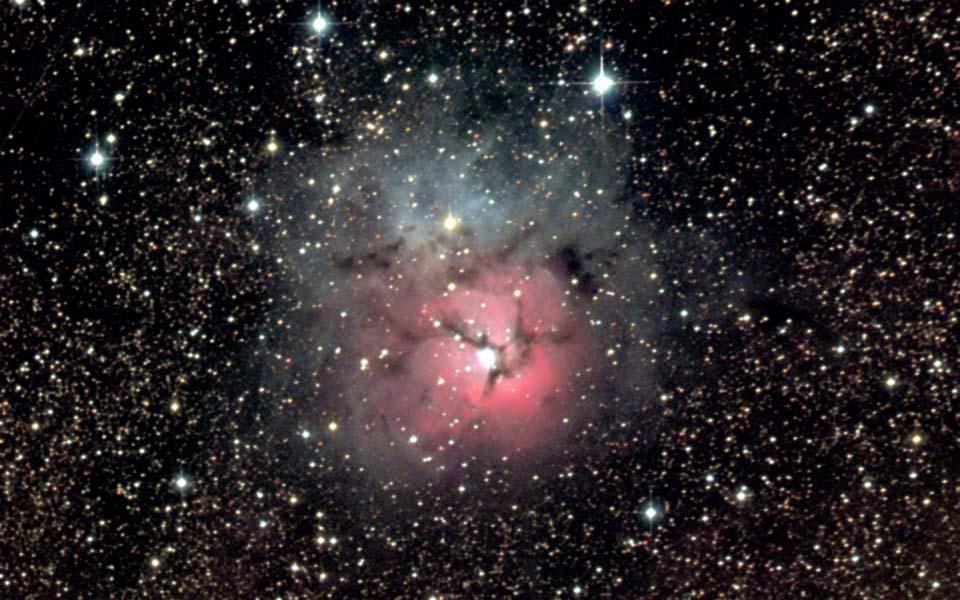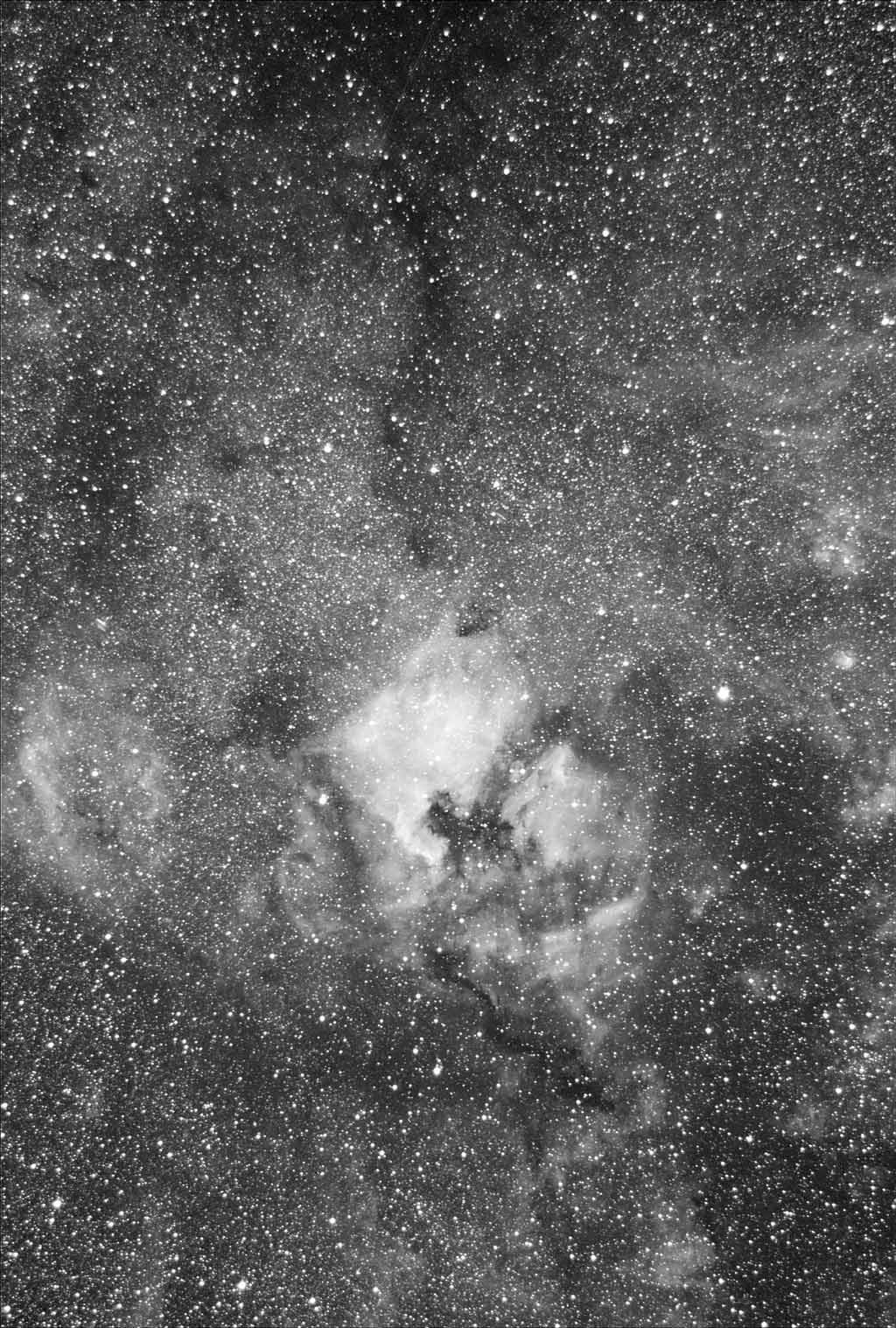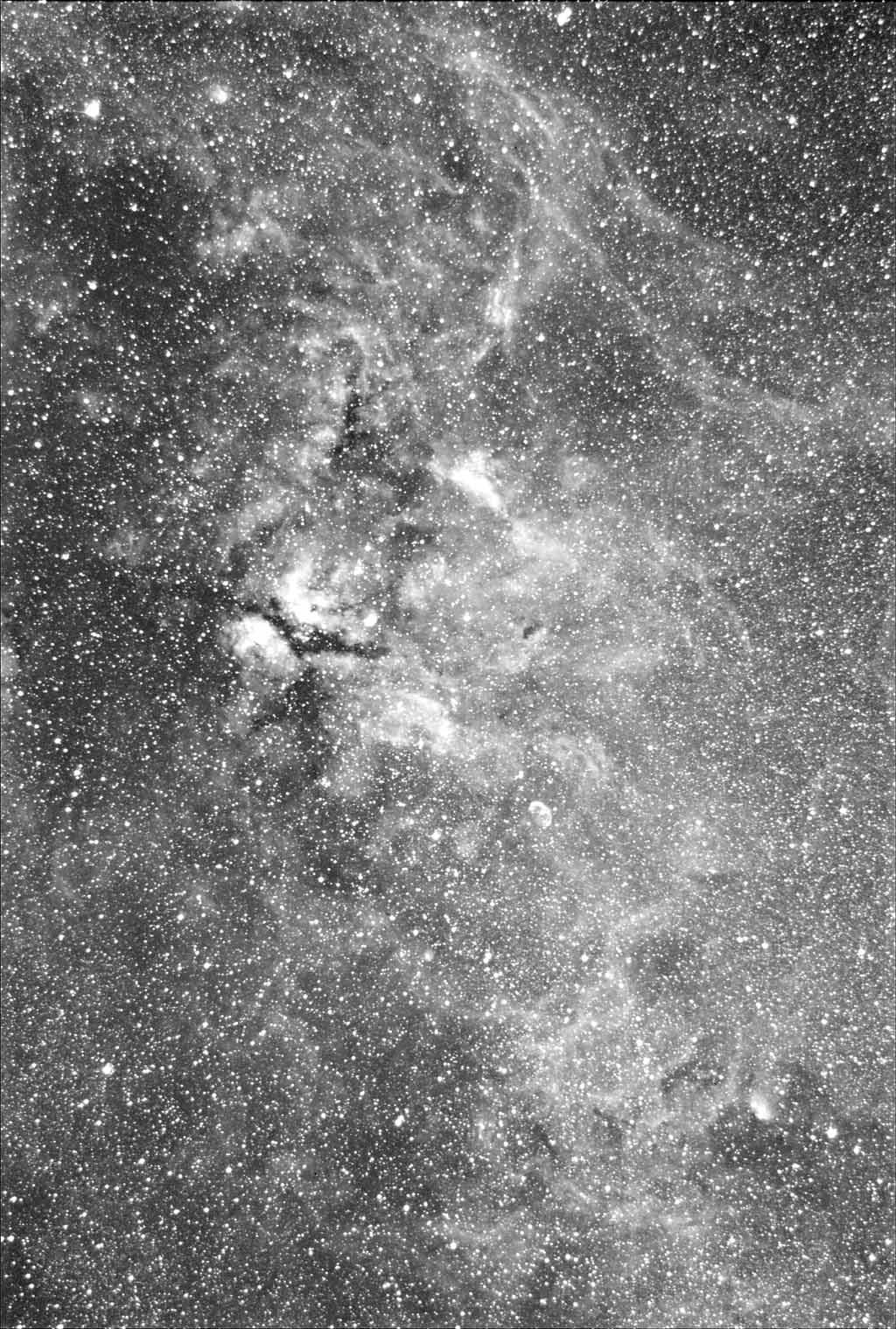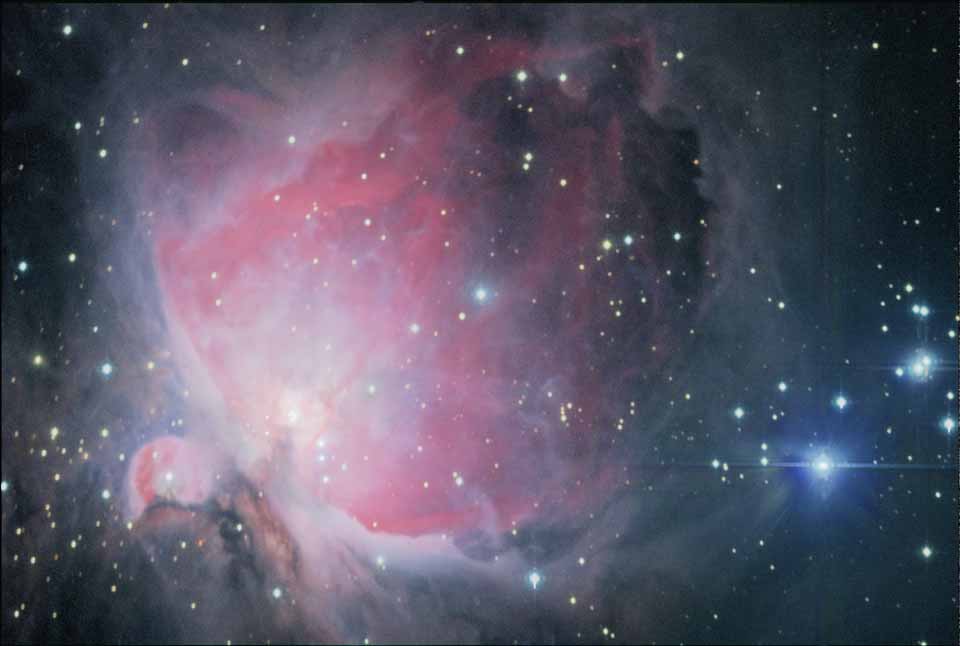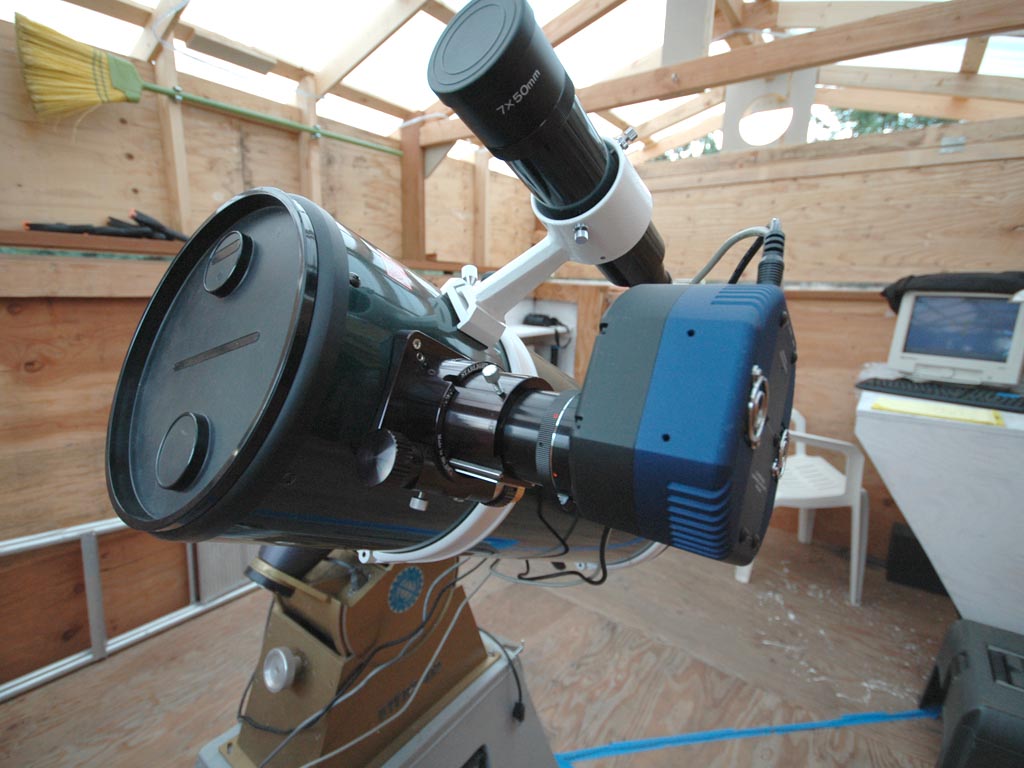Imaging with
Quantum Scientific Imaging's
|
Since July, I have been making images with a QSI 532ws CCD camera. For the last several years, the primary focus of my imaging work has been scientific, concerned either with issues in dark current and image calibration, with fluoresence in biological materials, or with optimizing the AIP4Win software that comes with every copy of the Handbook of Astronomical Image Processing. The camera arrived during a lengthy spell of bad weather, so I shot several hundred bias, dark, and light-box flat-field frames to determine the camera's characteristics. The gain of the camera I have is 1.33 electrons per ADU, the readout noise is 10.5 electrons r.m.s. (very good!), and the mean dark current is 0.03 electrons per pixel per second (also very good). But almost more important was the appearance of the bias and dark frames. Bias and dark frames reveal subtle aspects of a camera's "personality" that make a big difference when you try to take images at the limit. Bias frames are exquistely sensitive to noise from faulty camera electronics, stray radiofrequency noise, poor grounding, and a host of other details. Dark frames reveal non-uniformity in the CCD itself, how well the camera body cools the chip, electroluminescence in the chip, and a host of other problems. Interestingly, the QSI 532ws bias and dark frames showed none of these problems! |
M13: First
light for the new telescope and the QSI CCD camera. I
kinda like the satellite trail.
|
As intimated above, the QSI 532ws produces remarkably clean images. Bias frames and dark frames from other cameras that I've worked with have often exhibited artifacts such as periodic noise, but this camera's images are free of such artifacts. My initial impression has been confirmed as I've accumulated more calibration images at chip tempertures from 0 Celsius to -25 Celsius and exposure durations from 0.03 seconds to 1000 seconds. The high quantum efficiency of the QSI 532ws's KAF 3200me chip combined with its low readout noise suggested to me that this camera would do exceptionally well with short total exposures times. Why short exposure times? Well, I am in the process of replacing my beloved, reliable, and totally outdated Byers 812 mount with something more modern, but for the images I wanted to shoot this summer, I still had only the Byers mount. The Byers 812 has a 30-degree sector gear driven by a 120-volt 60 Hz AC synchronous motor and a declination tangent arm. Not only is this mount not a go-to, but also it cannot be converted to go-to. Furthermore, the sector gear drive means that every 100 minutes or so, the worm must be reset. On the positive side, the Byers 812 tracks quite well, with a periodic error of only about 5 seconds of arc. This means that I can shoot 60-second exposures -- with no guiding -- and stack them with AIP4Win, and, in fact, that's how I shot images for many years using my Cookbook 245 camera.
|
This
picture of the Andromeda Galaxy is my favorite from the
testing program. I'd like to think that this
|
| Okay,
let's get down to the nitty-gritty techy stuff. These
images were shot with a Vixen R200SS 200mm f/4 Newtonian
reflector with a Paracorr coma corrector on a Byers 812
mount, using 60-second exposures with the standard LRGB
filters that come with the QSI 532ws. I usually shot 16
60-second dark frames and 16 light-box flats and 16
flat-darks each night. Unfortunately, when I made the
master darks, I averaged the images, so the master darks
had some cosmic rays in them. The cosmic rays produce
little dark streak artifacts that are visible in some of
the images. When I get around to reprocessing these
images, I'll use AIP4Win's
median stacking to eliminate these artifacts. The QSI
532ws camera that I am using has a non-anti-blooming CCD,
so a few bright stars will exhibit blooming trails. Since
my interests tend toward astronomical science, and
because most of the evaluation I've done pertains to
scientific imaging, I regard blooming trails as something
that comes with the territory.
|
The
Triangulum Galaxy. This low-surface-brightness object
would benefit from more exposure time.
|
The Lagoon
Nebula. Low in the sky, not fully dark, through a gap in
trees, and it still came out.
|
The
Pleiades. The telescope fogged up so the total exposure
time was quite short. The diffraction spikes
|
NGC 6992 in the Veil Nebula. What a rich and starry region Cygnus is!
|
The Omega Nebula. L=18x60sec, R=9x60sec, G=10x60sec, B=10x60sec.
|
Here is
the northern end of Cygnus with a 60mm f/2.8
Nikon macro lens. Below is a close-up
|
This
negative image shows the Hercules Cluster of Galaxies.
There are many interacting pairs
|
The Trifid Nebula. It was low in the sky and suffers badly from poor seeing.
|
Here's the
North America Nebula and its rich surroundings imaged in
H-alpha light. This was shot using
|
The field
around g Cygni is rich in well-known
"objects" connected by an underlying continuous
matrix
|
I captured
this image of the Orion Nebula during the first
dark-of-the-Moon it was visible this year.
|
Here's a
wide-angle shot showing the QSI 532ws camera, the Vixen
R200SS telescope, the Byers
|
| For the
images, I shot 16 each of L, R, G, and B, and selected
the best for stacking into the L, R, G, and B color
channels using AIP4Win.
This means each color channel typically contains only 9
to 14 minutesof exposure time in each color channel. I
combined the color channels using AIP4Win's
Join Colors Tool, and did some final tweaks using
Photoshop. For what it's worth, these images have not
been retouched in any way. The QSI 532ws is a wonderfully versatile CCD camera. The compact body with T-thread adapter make it easy to use the QSI 532ws with a variety of optical configurations, including using standard 35mm camera lenses, Newtonian focus, Newtonian with Paracorr focus, as well as with refractors with 1.25- and 2-inch drawtubes, and SCTs with standard T-thread adapters. The camera's bias and dark frames are uniform and clean, making dark-frame subtraction and flat-fielding calibration easy and certain. The 532ws's temperature regulation is excellent. When you turn on the cooler, the camera cools rapidly and maintains temperature to 0.1 degrees Celsius, so dark frames that in July are still working with images shot in September. |
More photos of Alpaca Meadows Observatory. --Richard Berry |
Return to Richard Berry's Home Page |
